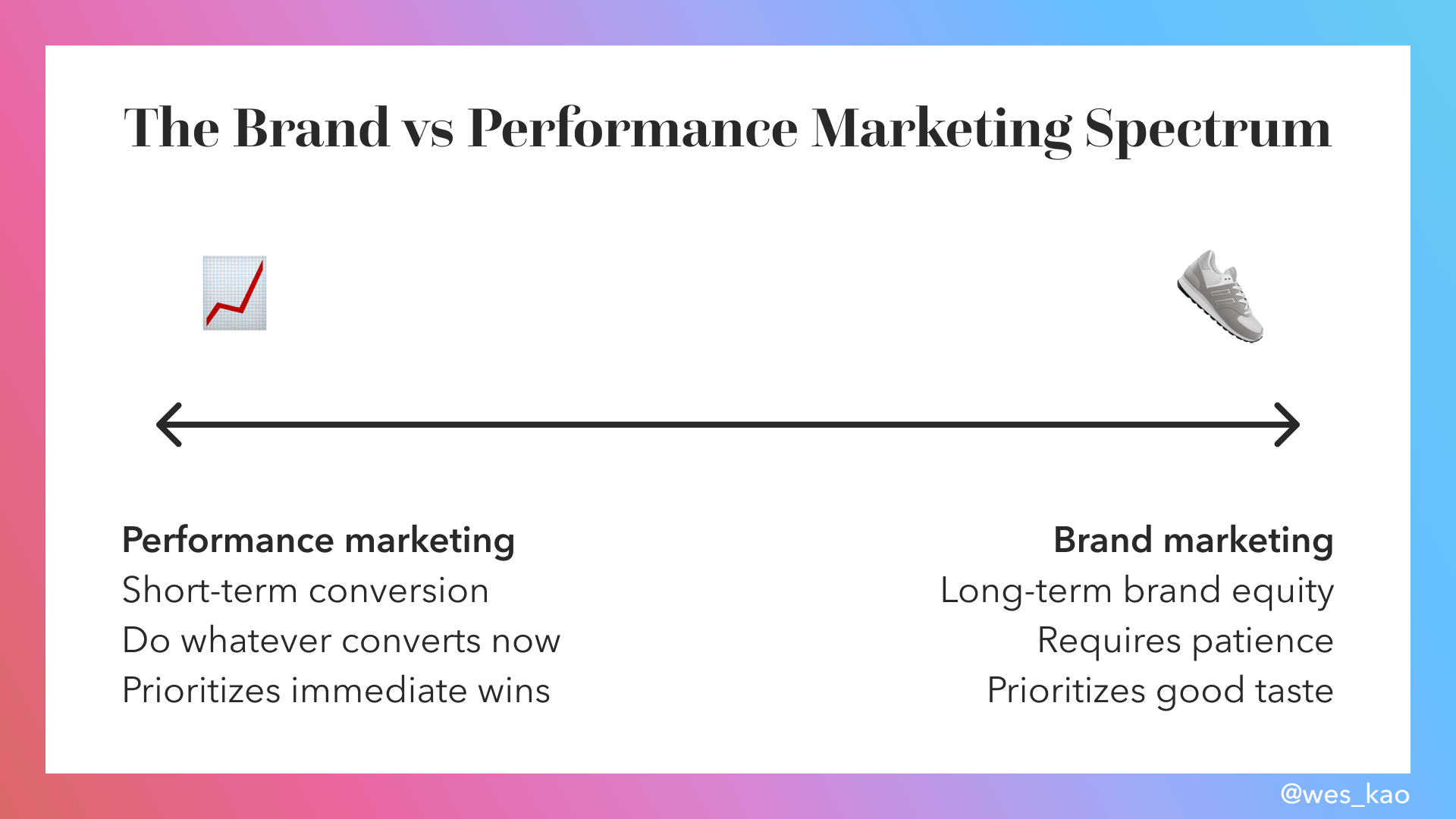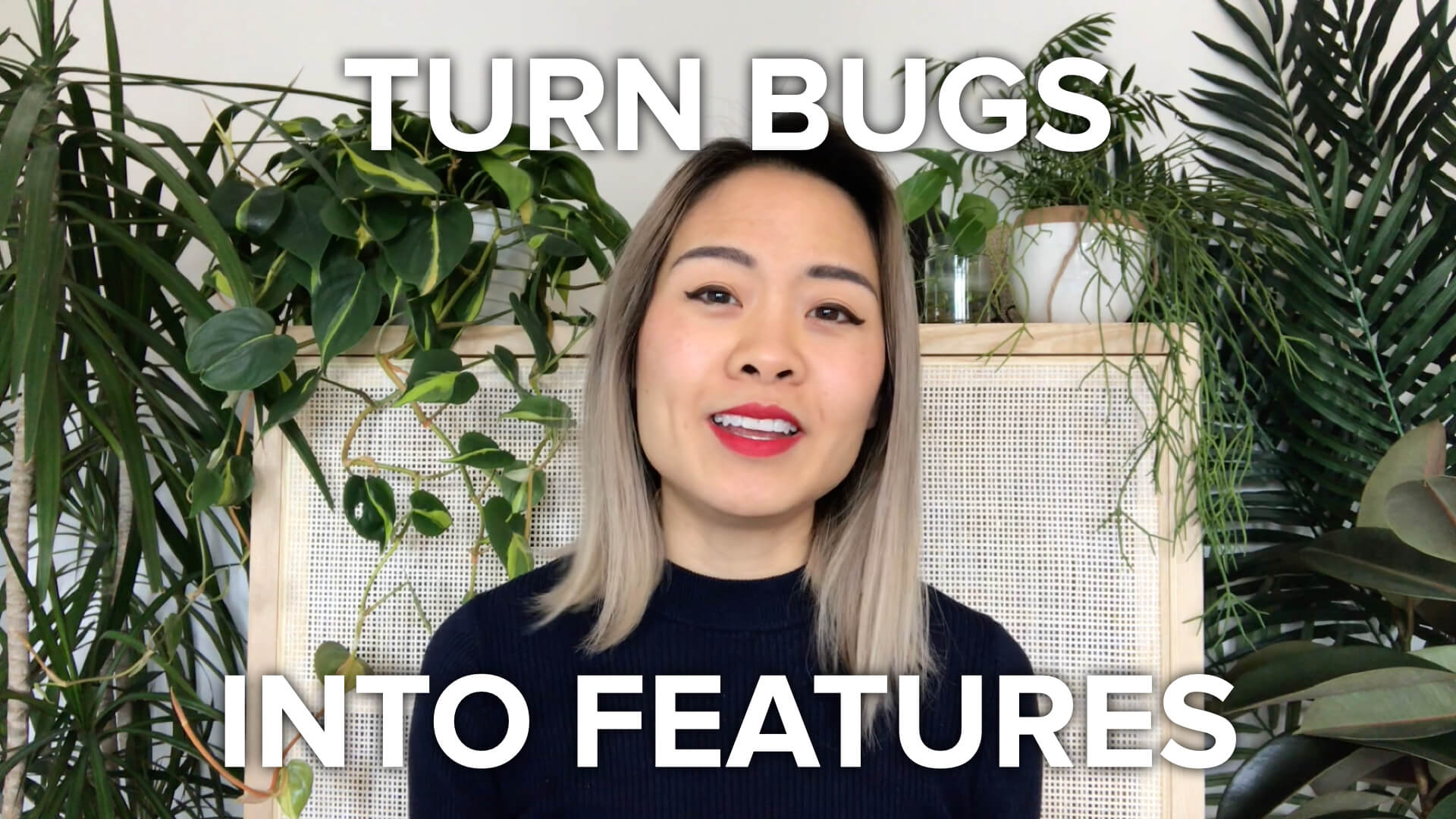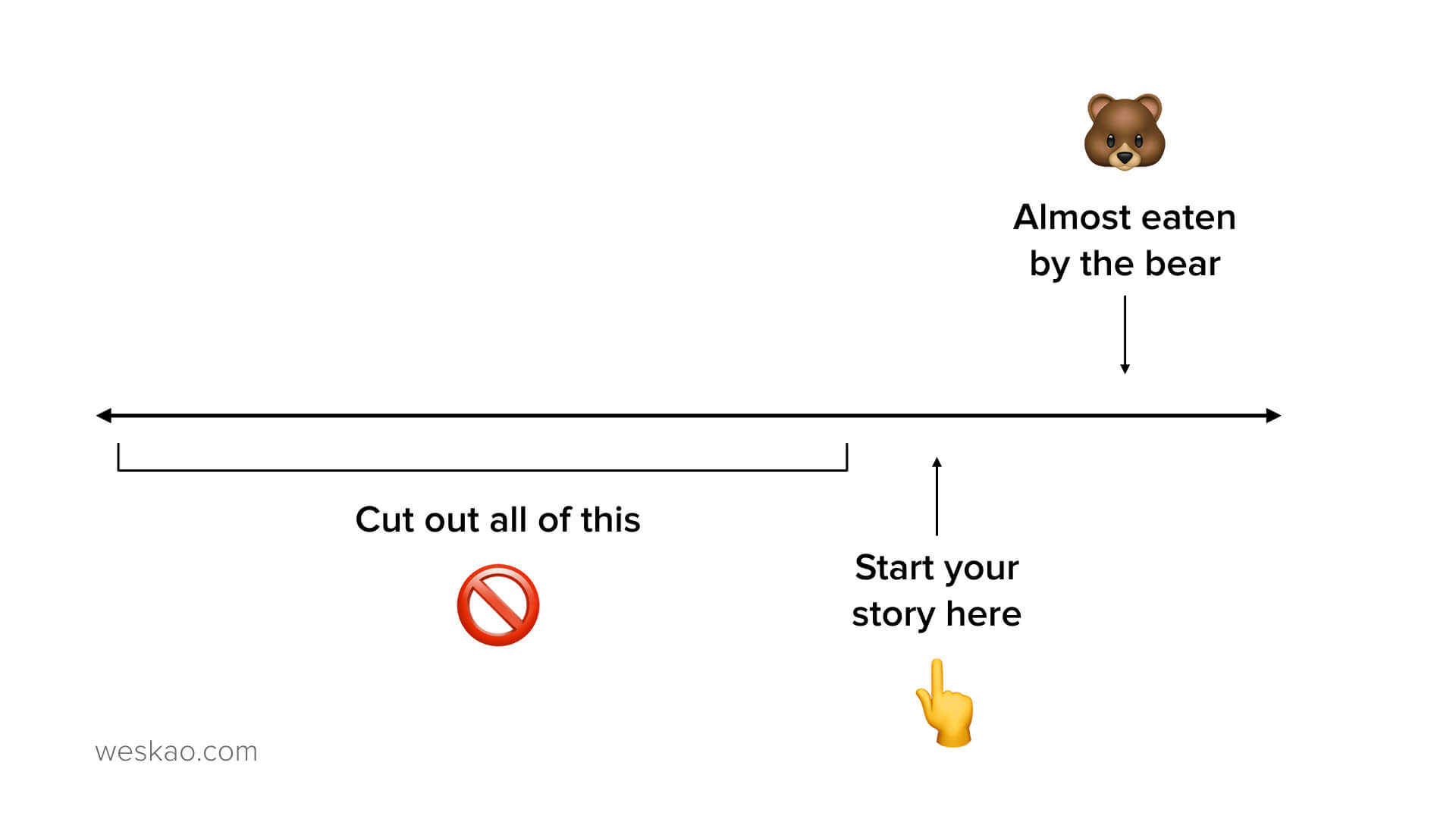Develop Your Spiky Point of View with Wes Kao
Hi there! Who are you and what’s your background?
I’m Wes Kao and I write the Marketing Fundamentals newsletter. I work with B2C brands to design, build, and launch new products and category extensions.
My clients include Poo~Pourri 💩, Professor Galloway 🕶, Outlier (from the cofounder of Masterclass) 🎓, Supernatural 🌱, and Morning Brew. ☕️
Before consulting, I was the co-creator and Executive Director of Seth Godin’s altMBA. I helped design, launch, and build the altMBA from zero to thousands of students in 550 cities in 45 countries in three years. Before that, I did brand management at L’Oreal, Gap Inc, and was Head of Digital Marketing at Flite (acquired by Snap).
I was born and raised in Silicon Valley, went to school at UC Berkeley, lived in San Francisco and New York. Now I live in Toronto.
What’s your newsletter about?
Soft skills are seen as fuzzy. But I believe they are as technical as hard skills.
My newsletter is about sharpening your soft skills as an end-to-end marketer, builder, and leader.
I write about the underlying principles you can learn from negotiations, marketing, copywriting, psychology, and behavioral economics. Soft skills only seem like abstract magic because you don't see the levers that drive cause & effect. My goal is to make the levers clearer, so you can use them with deliberate intention.
My readers are usually people who are 90% steak and 10% sizzle. They have credibility and want to better advocate for their ideas.
Recent newsletters covered topics like:
✔ how to develop a spiky POV
✔ how to get rid of insecure vibes
✔ how to share the right amount of context
✔ how to mentor yourself
✔ how to balance brand vs performance marketing
✔ how to increase your perceived value
These are all practical ideas you can apply to yourself today to make yourself smarter, happier, and more hireable. I don’t write about tips and tricks. The focus is on rigorous fundamentals to help you add more value–now and forever, in work and life.

How did the creation of altMBA come about?
In 2014, Seth put up a blog post looking to hire a Special Projects Lead at his headquarters in New York. He had just wrapped up his previous company, Squidoo, which was acquired a few months prior. He was looking for someone to help him figure out what to do next. I was in San Francisco at the time at an adtech startup funded by Sequoia Capital, and decided to apply on a whim. I ended up packing my life into six suitcases and spent the next three years building, shipping, and creating work with an incredible team. Three years is like dog years... so multiply that by 7!
My goal was to help Seth expand and diversify his product portfolio to better connect with his audience of one million readers. The challenge: "How do you take a non-scalable asset like Seth—and create intimate, transformative experiences at scale?"
The altMBA was the result of months of brainstorming, white-boarding sessions, diving into various business models, and a wall full of index cards of different ideas. When we agreed we wanted to flip the script of online education, I stayed on to build, launch, hire the team, and grow the altMBA from pre-launch into a vibrant community of thousands of brilliant entrepreneurs, innovators, artists, designers, and leaders from 45 countries.
When did you get started writing your newsletter? What motivated you to get started?
I just had the 10 year anniversary of my blog and newsletter. When I started writing in 2010, I had no idea this would be one of the most rewarding habits to build.
Writing my newsletter has been a consistent habit that’s helped me think more clearly, articulate ideas, and ship. I see each article as building a piece of work from scratch. I think of an idea, flesh it out, then make dozens of creative choices on how to express the idea to give it the weight it deserves. All of this has sharpened my ability to see nuances and create work with texture.
The topic matter has evolved over the years as I've grown and changed. But the one common thread is my love of fundamentals. Practical, timeless principles that help you think strategically and make deliberate decisions every day.
I write about practical ways to be more strategic in work and life because I believe all of us would benefit from thinking more strategically in our daily work and life.
If you don’t, you create friction for yourself that’s entirely avoidable if you were more deliberate about how you approached your boss, coworker, or customer. If you invest in a bit of upfront thinking, you can create a lot more ease and get folks to give you an enthusiastic yes.
.png)
What does the process of writing your newsletter look like for you?
At any given time, I have 20-30 drafts of posts. Some are one sentence and others are 90% done.
I have more ideas for articles than I will likely ever be able to publish. On the one hand, I'm relieved that my brain continues to produce decent ideas. On the other hand, I feel frustrated that I can't write more or go faster. I'm working on reducing the self-flagellation though.
One of my favorite parts of writing my newsletter is pulling up a draft I wrote from a few weeks ago, seeing it with fresh eyes, and making edits that now seem super obvious. If I let it sit as a draft, there’s usually something not quite ready about it but I can’t articulate why.
After I let my brain forget about it and come back to it, I can spot the issue. Fixing it and knowing a small change made a world of difference in strengthening the overall piece... That feeling will never get old.
I know a post is ready when I feel 100% like I’ve hit on a nugget of truth and can stand behind my idea with conviction. It doesn't mean my idea is irrefutable, factual, objective truth. It simply means I believe strongly enough in the idea to try convincing my readers that it’s worth their time. I think it’s morally irresponsible to say something you don’t really believe in.
I’ve recently started creating 2-minute videos on LinkedIn and Twitter to accompany topics I cover in my newsletter. For example, I did a video on how to turn bugs into features. In other words... anything bad you can reframe into a positive selling point. These have been a lot of fun to create and I’ve heard great feedback from readers.

What have you learned through writing your newsletter?
A few lessons:
Assume your audience is reading with 10% of their attention. They are not stopping everything to read a meandering email without a clear ask. If it's confusing, they'll mark it for later. And later turns into never. Make your writing instantly understandable.
Tune into what works for you and do that. That might look like sprints of deep work where you feverishly crank out a bunch of writing, then weeks when you write very little. Most people are surprised to find out I'm not particularly disciplined. The "write a bit each day" approach has never worked for me. But I've had a decently good career and publish on a regular basis, so I hope my story can show other creators you don't have to wake up at 4am or take cold showers or do rigid daily habits to be successful.
I wish more people spent time trying to get good at their craft. And less time trying to monetize every bit of knowledge so they can sell courses because they think it’s a highly leveraged way to make money. You need equal sizzle & steak. Not 90% sizzle and 10% steak. If you invest in your craft, you’ll stand out over the long arc.
My own writing used to be the first thing to give up if I felt busy. After a day of thinking for clients, there's not much juice to work on my own stuff. But one day I made an intentional decision to prioritize my writing. I didn't want to cancel appointments with myself anymore. Of course this means sometimes I'm editing at 1:30am so the post can go out on time the next morning. It’s worth prioritizing your own body of work, so don’t let that slide the minute a competing priority comes up.
Cut as much backstory as possible, so you start your story right before the action starts. I called this starting right before you get eaten by the bear. People want to hear the juicy stuff. Ask yourself, "What’s the minimum amount of backstory my reader needs in order to understand me?”

What’s your favorite part about writing your newsletter?
Deep thinking is my favorite part. Writing my newsletter is intense intellectual stimulation and problem solving rolled into one.
This is both the best and most agonizing part of writing my newsletter. There are so many creative micro-decisions that go into how to explain a topic. Deciding how to put the article together is hard and different every time, but I feel so much satisfaction after getting an article just right.
Where can readers go to learn more about you and your newsletter?
Resource Library: https://www.weskao.com/resources
Twitter: https://twitter.com/wes_kao
Newsletter: https://www.weskao.com/subscribe
Here are some recent popular posts:
1. Spiky point of view: Let’s get a little controversial 🌵
A spiky point of view is a perspective others can disagree with. But it’s not being contrarian for the sake of it. This is the quickest way to differentiate yourself.
2. The Law of Brand vs. Performance Marketing
Are you optimizing for long-term brand equity or immediate wins? This will sharpen every decision about your marketing.
3. The rise of the end-to-end marketer
If a normal marketer is an infantry soldier, these marketers are Navy SEALs.
4. Insecure vibes are a self-fulfilling prophecy
Insecure vibes are subconscious clues and signals that you might be giving off when you're feeling anxious, nervous, or a little uncertain. Get rid of insecure vibes—and your pitches will become stronger.
5. Take 3 minutes to delete these words and improve your writing forever
Language is a free way to be strategic. Delete these words and you will sound warmer, more authoritative, and more effective.



